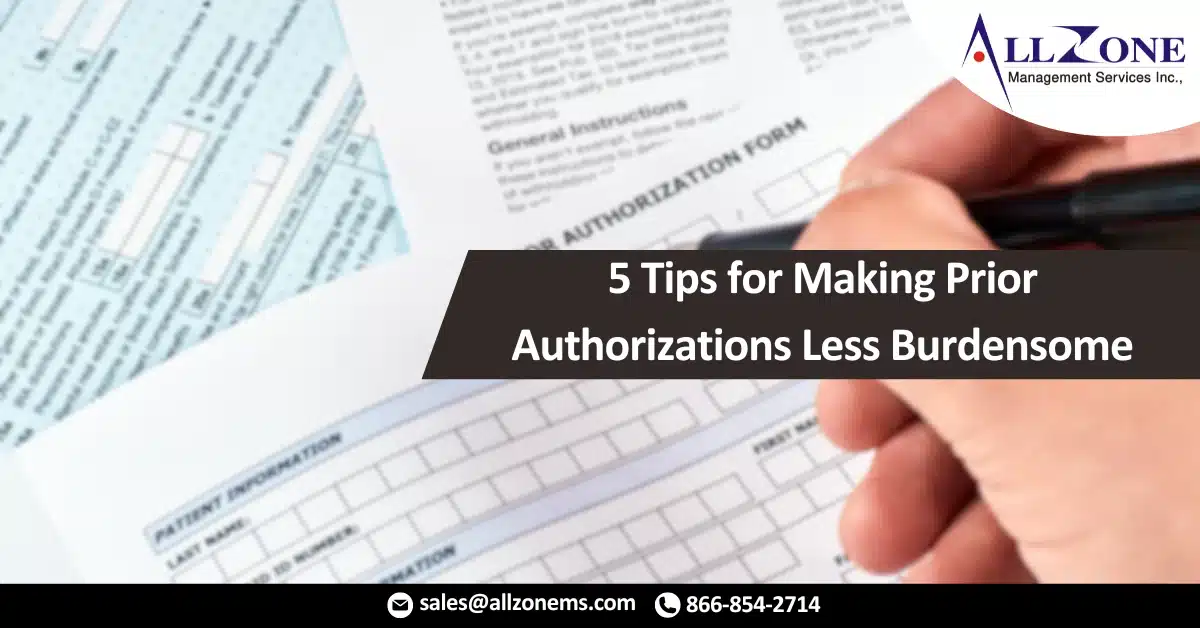A 2016 study in the Annals of Internal Medicine found that for every hour physicians spend in direct face-to-face clinical time with patients, they spend nearly two additional hours on desk work.
According to the American Academy of Family Physicians (AAFP), this administrative burden is one of the primary complaints of its members, and prior authorizations top the list of administrative burdens. These requirements cause a great deal of angst among clinicians — from the feeling that payers are telling them how to practice medicine to confusion about exactly what justification any given payer wants.
But according to Physician Practice’s sister publication Medical Economics 90th Annual Physicians Report, the biggest complaint about prior authorizations is the sheer time they take.
Brennan Cantrell, commercial health insurance strategist for the AAFP, offers five tips for prior authorizations a little bit easier.
Know Your Triggers
Cantrell suggests avoiding the problem if at all possible. Each practice will have some commonly used medications or procedures that are likely to trigger prior authorization requirements. “Be aware of what drugs and procedures you frequently use that are likely to require pre-authorizations and have options ready,” he says.
If a particular medication is causing problems, take a look at the formulary and see if there is an adequate substitute that will not require pre-authorization. “You might be able to use a generic drug or another alternative,” Cantrell says. Having a list of drug options at the ready may mean you can avoid the pre-authorizations process altogether.
Have a Designated Hitter
Smart use of staffing can help, too. “I’d recommend designating someone in the practice who understands the rules to take care of this,” Cantrell says. Because the processes and rules can vary from payer to payer, if the person dealing with prior authorizations is up to date on these, you won’t be reinventing the wheel each time you have to submit a prior authorization. This can save time as well as prevent mistakes. In a larger practice, you might even have a small team assigned to this.
Go Electronic
Some practices keep pre-written templates on hand for commonly used drugs or procedures, and that can save a lot of time. However, electronic authorizations can save even more time.
Sadly, that is not always an option. “Often the portals [for submitting pre-authorization forms] are outside the EHR,” Cantrell says. “You have to log out and back in. The AAFP advocates that the pre-authorization process be in the workflow.”
Some insurance companies are working with EHR vendors to make that happen, but getting those changes made will take some time. However, your EHR may already be optimized for pre-authorizations. Make sure you are aware of your EHR’s functionality around pre-authorizations. If your system does have these features, get your staff trained to make the most efficient use of it.
Customize Your EHR
Some EHR software can even alert you when a drug or procedure is likely to require a pre-authorization and suggest alternatives, Cantrell says. If possible, configure your system not only to send alerts but generate a report listing what information the payer will need and other details. Not having to track down what each payer requires will save your staff time when moving through the process.
Keep Patients in the Loop
Pre-authorizations are stressful for you, and they’re stressful for your patients, too. Patients waiting for medications or procedures may not understand what’s causing the delay. Keep your patients in the loop with a quick phone call or note via your patient portal. They will certainly appreciate your thoughtfulness and will be less likely to blame you for the delay.
Pre-authorizations are never going to be fun, but if you make these few small tweaks they might not create quite so many headaches.
For More Information: https://www.physicianspractice.com/medical-billing-collections/5-tips-making-prior-authorizations-less-burdensome

